-
EngineTurbo 2.0L I4
-
Power241 HP / 273 LB-FT
-
Transmission9-Speed Automatic
-
0-60 Time6.2 Seconds
-
DrivetrainRear-Wheel Drive
-
Engine PlacementFront
-
Curb Weight3,902 LBS
-
Seating2+3
-
Cargo13.1 CU-FT
-
MPG23 City / 30 HWY (est.)
-
Base Price$53,000 (est.)
Now before you mail your angry stamped letters to the Autoblog office, let us qualify that above statement. This was a First Drive, part of a multi-wave press preview in Lisbon, Portugal. As is typical of these programs, our on-road driving time was limited. A few miles flying around the hills that frame the Tagus River suggest the E-Class is a solid driver's car as well, but we'll withhold judgment until we try a US-market car on familiar roads.
As for the automatic driving, the E-Class is like the world's greatest (or most annoying) driving instructor. It knows things you probably don't consider, and still does it better than if you did know. Thinking about a lane change? The blind-spot warning doesn't just tell you if a car's in the adjacent lane, it also picks up cars that are closing fast and flashes a warning light to keep you from cutting off another driver.
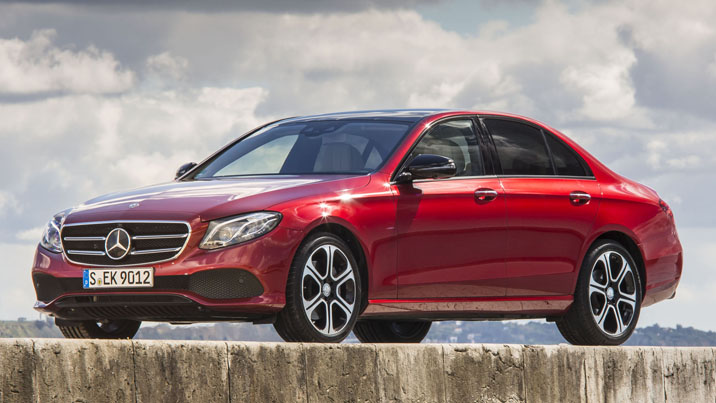
The main almost-autonomous feature in the E-Class is called Drive Pilot and is part of the Driver Assistance package. The features of Drive Pilot break down in several more confusing names containing either Distronic or Pilot. In short, the car can maintain safe distance to other cars at speeds up to 130 miles per hour and automatically steer to keep you in the lane. If no lane markings are present, the E-Class can follow traffic at speeds up to 80 mph. It even has a lane-change assist feature: hold a turn signal for two seconds, and the car will move to the left or right.The 2017 E300 is the closest thing on the market today to a self-driving car.
In practice, this is the best automatic lane keeping system we've seen. The Tesla Model S offers more information, with a constant display in the dashboard of the visible lanes, but the E-Class works more seamlessly with the driver. Unlike Tesla, Mercedes won't let you keep your hands off the wheel indefinitely. After about 30 seconds and several warnings, the car will slow and eventually come to a stop with the hazard lights on. See a demonstration in the video below.
But you don't have to grab the wheel to keep the reminders at bay. You can also just tap one of the Touch Controls on the steering wheel, two mini-touchpads that navigate the menus on the instrument cluster and main infotainment screen. The practical result is that as long as you keep your eyes on the road and tap the wheel every few seconds, you can go for miles without using the steering, brakes, or accelerator. The automatic steering is limited by the amount of torque applied to the steering wheel, so the angle of a corner the E-Class can take depends on speed and road conditions. We had a few cases where the car started to turn but couldn't maintain trajectory, which is exactly why we emphasize keeping your eyes on the road when you're not driving.The 2017 E-Class has an amazing suite of features aimed at preventing a crash if you take your eyes off the road.
That said, the 2017 E-Class has an amazing suite of features aimed at preventing a crash if you take your eyes off the road. In a series of demonstrations at the Autódromo do Estoril, Mercedes used balloon cars to stand in as dummies – the radar and camera system sees them as the real thing.
The most amazing autonomous safety feature on the new E-Class is cross-traffic prevention. Given the right set of circumstances, the car will automatically brake to prevent a broadside collision. Check out the video below.
Possibly even more amazing, the E-Class can see a near miss coming. Watch this demo of the same cross-traffic scenario but with our car one lane to the left.
And yes, the E-Class does all kinds of other stuff. If you're in danger of side-swiping a car, it will tug the brakes on the opposite side to nudge you away. It does the same thing if you're too close to the center line and oncoming traffic is present.
Pedestrian detection and braking? Check. Bicycle in the blind spot? Check. Stopped traffic on the highway up ahead? Yes, the E-Class can handle that. For one trial we closed down on a fake car traveling much more slowly and were instructed to keep our foot on the gas. We panicked, lifted, and brushed the brakes before the system could kick on. Heart in our throats, we tried again determined to trust the computer. Sure enough, the E-Class overrode the accelerator and jammed on the brakes to stay within inches of the car in front.Pedestrian detection and braking? Check. Bicycle in the blind spot? Check. Stopped traffic on the highway up ahead? Yes, the E-Class can handle that.
The way these systems work are reassuring on a few levels. They're clearly playing in the margins between aggressive driving and actual danger. As such, it's unlikely you'll notice an intervention in everyday driving. The only exception to that is the automatic speed limit detection that can adjust the car's speed. We didn't have any problems on our test drive, but as a previous experience at home in an Audi suggests, like all of these autonomous system, that the computers haven't outsmarted us yet.
There's an even longer list of features like optional rear-seat airbag belts to a seat bolster that will push you inward away from an side-impact crash. We'll spare you the details, but check out our earlier preview if you want to learn more. The E-Class will also have an option to unlock and start your car with an NFC-enabled smartphone – leave the keys at home. Android Auto and Apple CarPlay will be available from launch.
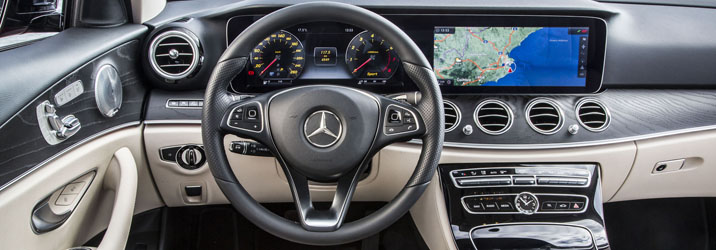
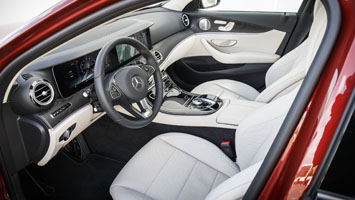
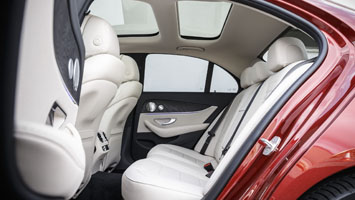
An then there's the stuff we don't get in the US, at least for a few model years. There are the Multibeam headlights, which consist of three rows of LEDs that cycle on and off to give maximum luminance. In Europe and other markets these beams can cut out the area of an oncoming car and leave the brights on elsewhere. We get the LED cluster but are stuck with the boring high/low setting dictated by our country's regulations. We also don't get the Remote Parking Pilot, which can perform parallel or perpendicular parking via a smartphone app with the driver outside the car. And lastly, E-Class cars in our market won't have Car-to-X communication, which allows for connected vehicles to send and receive road hazard warnings from the cloud.The electronics on the E-Class are the highlight, but the rest of the car is impressive.
The electronics on the E-Class are the highlight, but the rest of the car is impressive. As we detailed three months ago, the interior sets a new standard (even if you agree that 64-color ambient lighting is ridiculous). There are parts of the cabin that are merely ordinary. The soft black plastic dashboard covering on lower trim levels, and the rear seat bottom is a little short. We also only drove models with the digital instrument cluster, which is a special order item on the E300. A more conventional two-binnacle cluster with a smaller center digital display is standard. When the next E-Class model comes (we expect a mid-level AMG designation, probably E43) the high-res gauges will be optional.
One thing we love about the E-Class is the low dashboard height. Sight lines and visibility are excellent in this car. It feels almost old-school to be able to see so much of the hood. Outside, the new E-Class completes the styling trifecta started by the S-Class and continued with the C-Class. Like Goldilocks, we think the middle option is just right. It's so handsome the Korean taxi-cab styling of the last E-Class is almost banished from our memory.
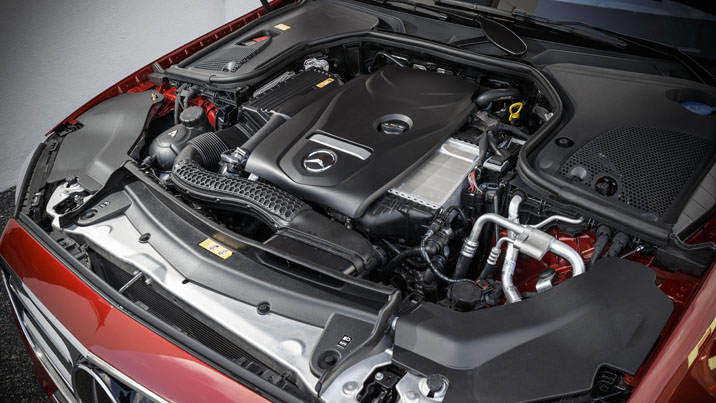
Mechanically, the 2017 E-Class sits on a new structure that is 154 pounds lighter than before. Weight gains elsewhere mean the car, as a whole, is 70 pounds lighter than its predecessor. Steel springs are standard with computer-controlled dampers, and new air springs are optional.Under the hood the new E-Class begins in the United States as the E300, using the same 241-hp turbo-four as in other Mercedes vehicles.
In the United States, the E-Class range starts with the E300, using the same 241-horsepower turbocharged inline-four as in other Mercedes-Benz vehicles. The motor connects to a nine-speed automatic. It's the same setup as in the GLC300 which, despite the C-Class nomenclature, shares many underpinnings with the E-Class. In other markets the E-Class comes in diesel, twin-turbo V6, and hybrid versions. As we mentioned, the next model for America should be a variation on the boosted six-cylinder wearing AMG badges. The inevitable E63 will also debut in the coming months.
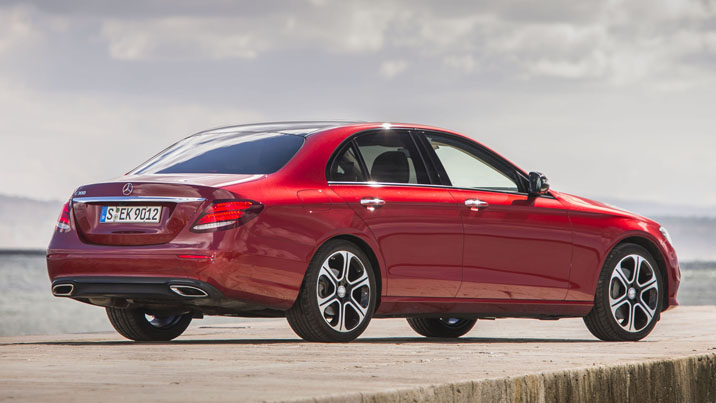
It's still hard to forgive the E300's nonsensical nomenclature, but the engine indeed feels greater than the 2.0 liter displacement suggests. At idle, especially outside the car, there's an unbecoming clatter form the direct-injection fuel rails. Dial up the driving mode into Sport or Sport+ and the combination of real and synthesized (we suspect more of the latter) intake noise is enough to crack the most stoic expressions. The sportier drive modes also adjust the dynamic cruise control settings. Comfort and Eco modes default to lighter acceleration on cruise and softer, earlier shifts on the transmission. There's an Individual setting for obsessive-compulsive types, as well as steering wheel-mounted paddle shifters.For now, the E-Class looks like it's the best car to drive, and the best car to drive itself.
Even in the hardest-charging portion of our test drive we let the computer pick the gears. On occasion the shift programming tries to shift one gear too low in response to acceleration, only to rev out to the next ratio a fraction of a second later. Most of the time the programming works perfectly, down to the detail of downshifting as you lift off the gas and enter a corner. For those keeping score at home, Mercedes-Benz says the E300 will do 0-62 mph in 6.3 seconds.
For a car that could spend most of its time driving itself, the E-Class is still fun to drive. As we mentioned our time was brief, but in terms of steering responses, agility, and surefootedness, the E300 is as good as the Audi A6 and BMW 5 Series. Add in a quiet cabin and smooth ride and E300 could be the best midsize luxury sedan on the market. As always, we'll hold on to an out clause on these opinions after we get more exposure behind the wheel. But for now, the E-Class looks like it's the best car to drive, and the best car to drive itself.
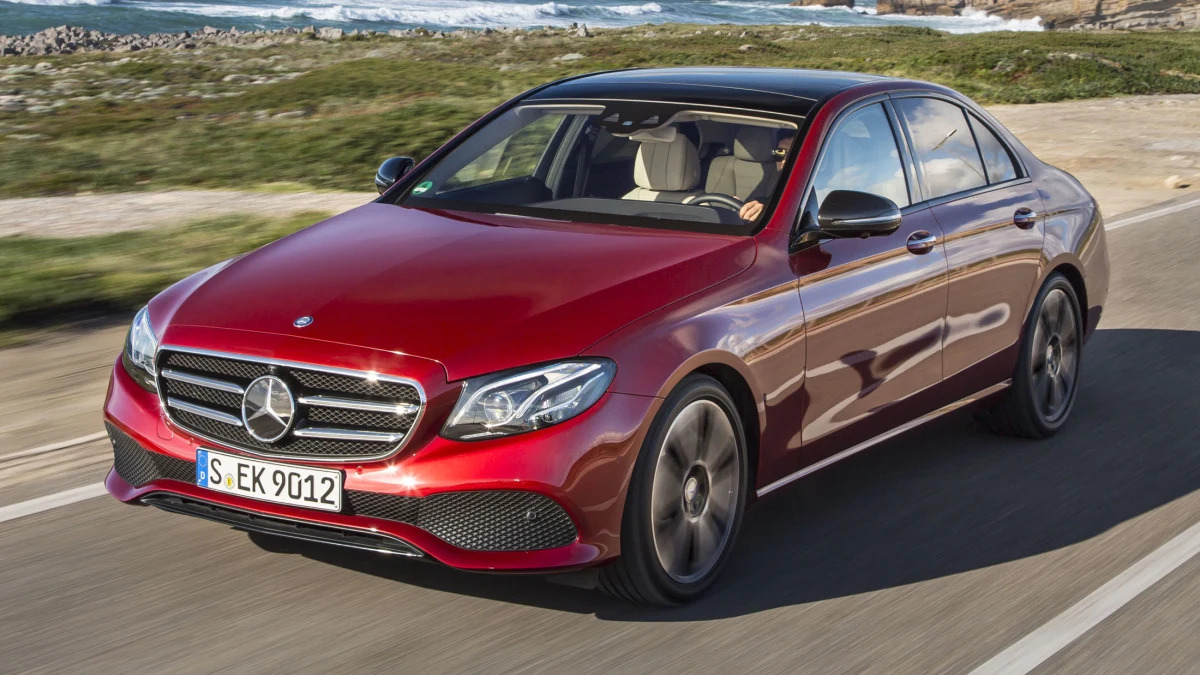
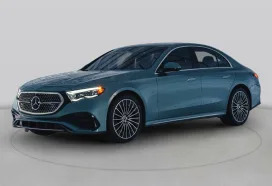
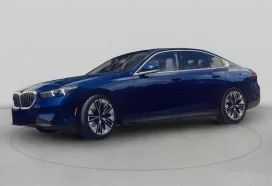
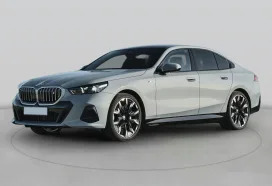









Sign in to post
Please sign in to leave a comment.
Continue